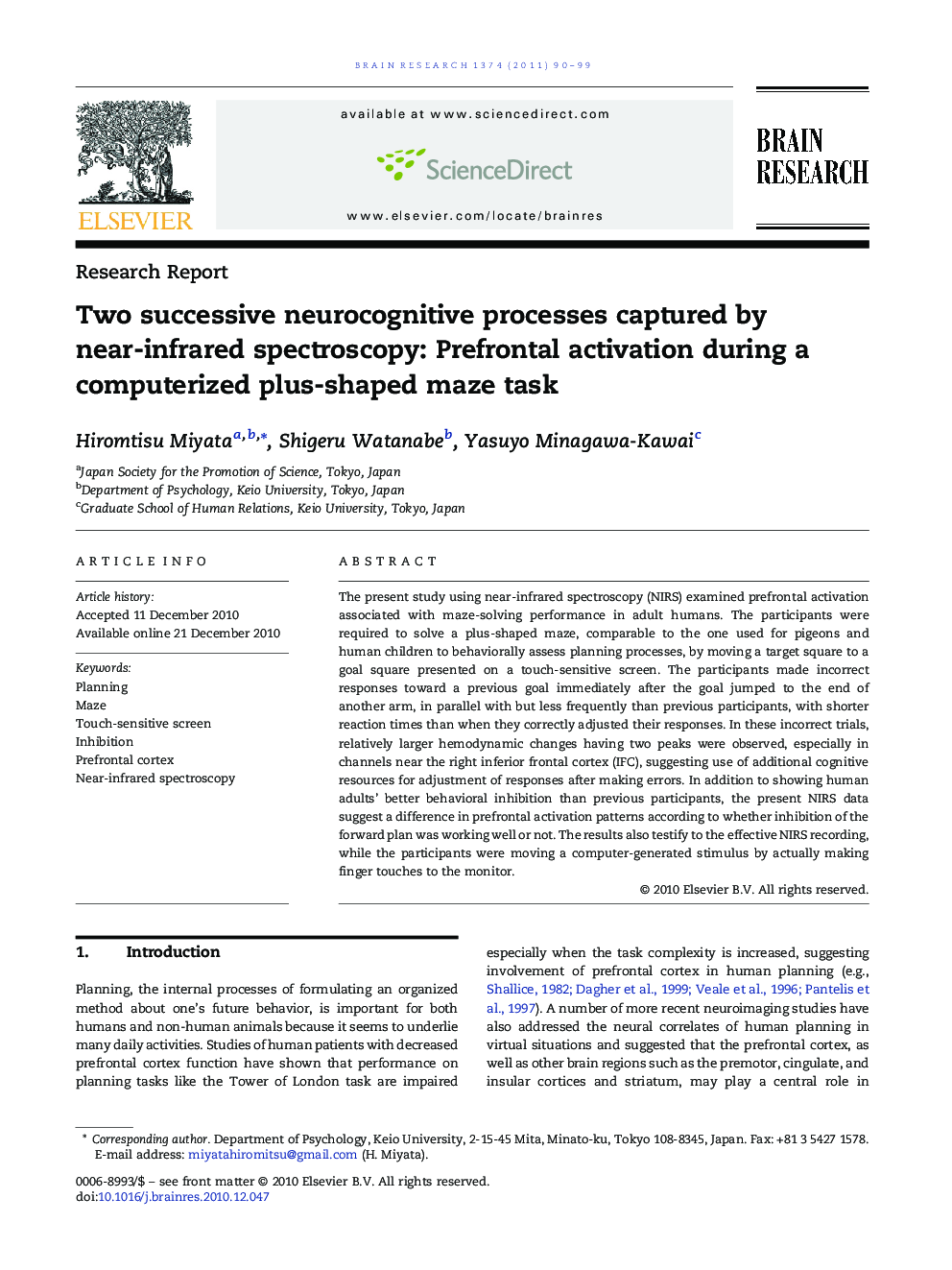| Article ID | Journal | Published Year | Pages | File Type |
|---|---|---|---|---|
| 6265161 | Brain Research | 2011 | 10 Pages |
The present study using near-infrared spectroscopy (NIRS) examined prefrontal activation associated with maze-solving performance in adult humans. The participants were required to solve a plus-shaped maze, comparable to the one used for pigeons and human children to behaviorally assess planning processes, by moving a target square to a goal square presented on a touch-sensitive screen. The participants made incorrect responses toward a previous goal immediately after the goal jumped to the end of another arm, in parallel with but less frequently than previous participants, with shorter reaction times than when they correctly adjusted their responses. In these incorrect trials, relatively larger hemodynamic changes having two peaks were observed, especially in channels near the right inferior frontal cortex (IFC), suggesting use of additional cognitive resources for adjustment of responses after making errors. In addition to showing human adults' better behavioral inhibition than previous participants, the present NIRS data suggest a difference in prefrontal activation patterns according to whether inhibition of the forward plan was working well or not. The results also testify to the effective NIRS recording, while the participants were moving a computer-generated stimulus by actually making finger touches to the monitor.
Research highlights⺠Adult humans performed a maze task with better flexibility than pigeons/children. ⺠Prefrontal activation differed according to behavioral patterns and brain regions. ⺠In a condition requiring inhibition, bimodal hemodynamic responses were elicited. ⺠Different activation foci of those peaks suggest consecutive neurocognitive processes. ⺠Utilizing NIRS, we showed frontal activation in a live situation of problem solving.
